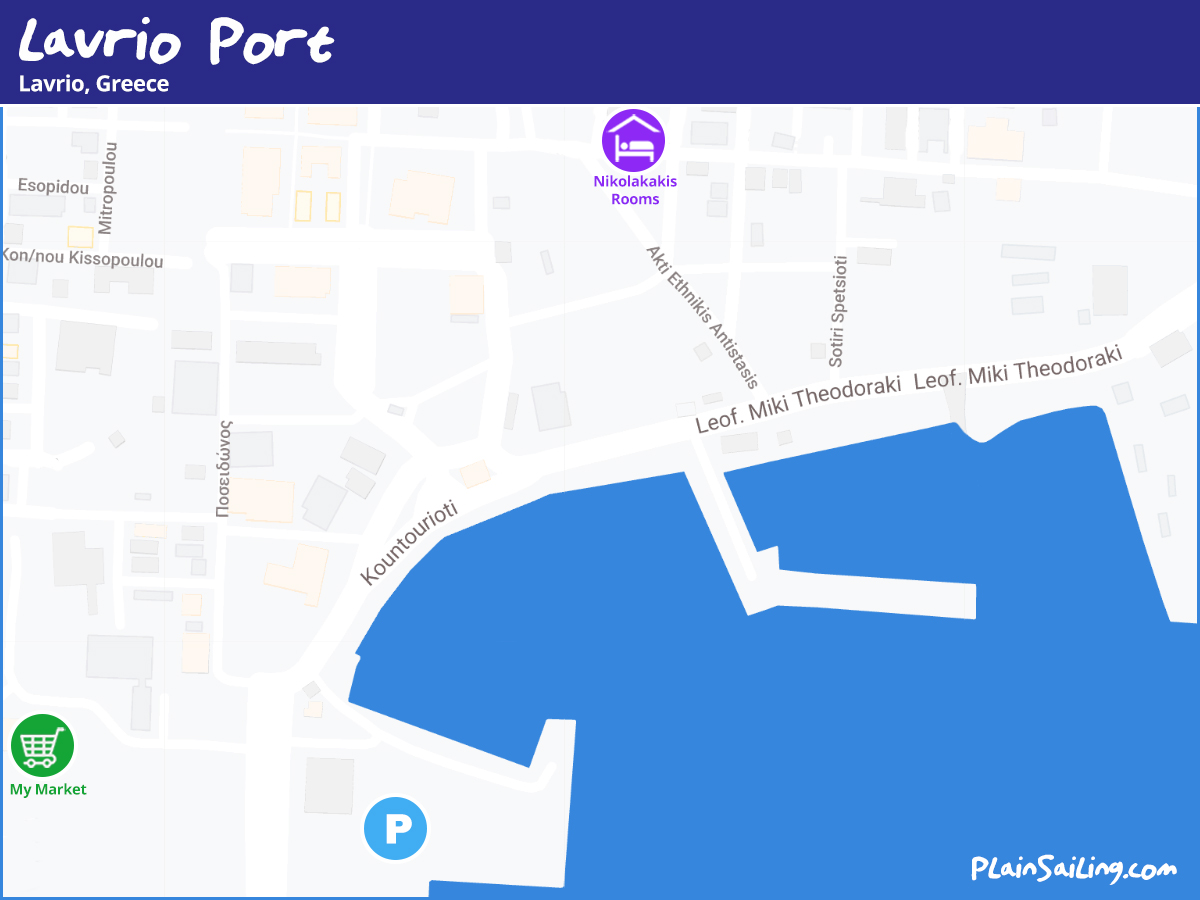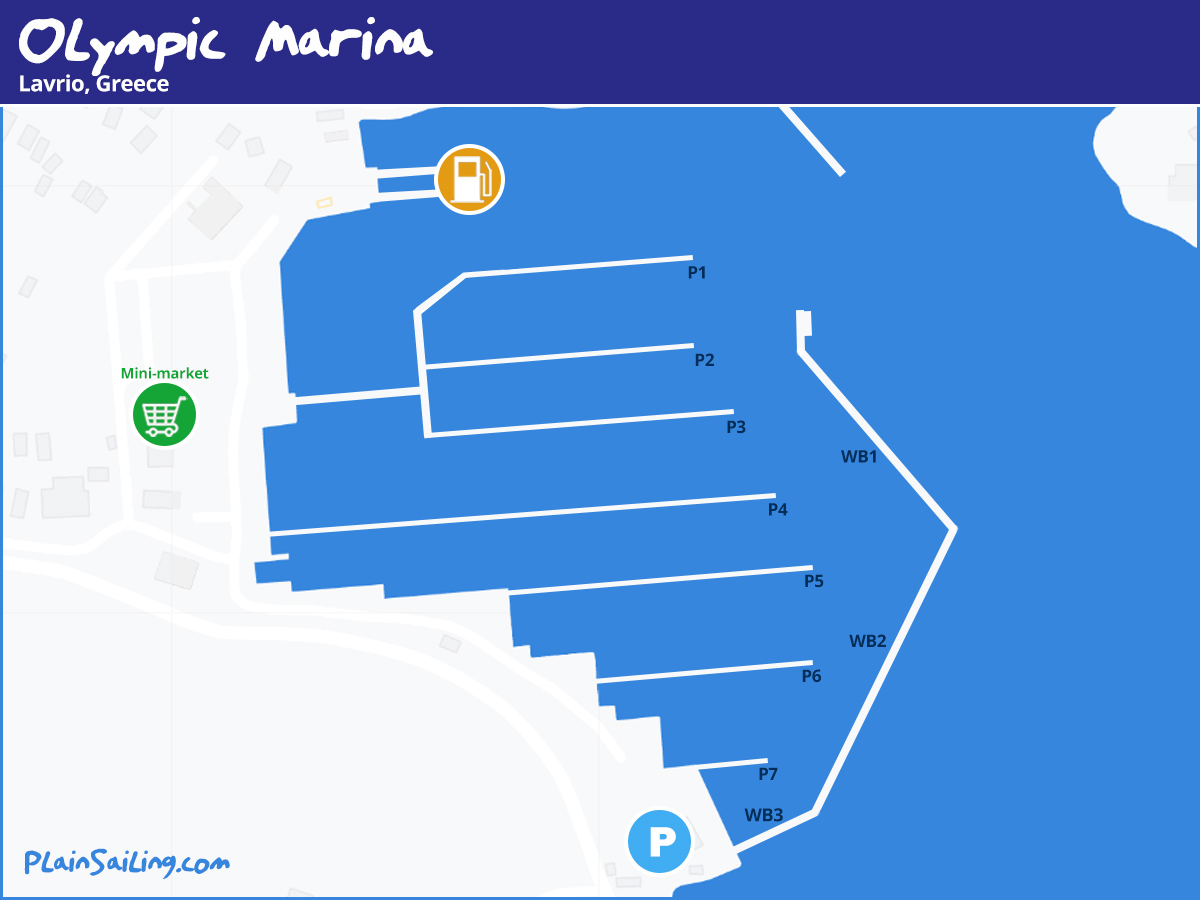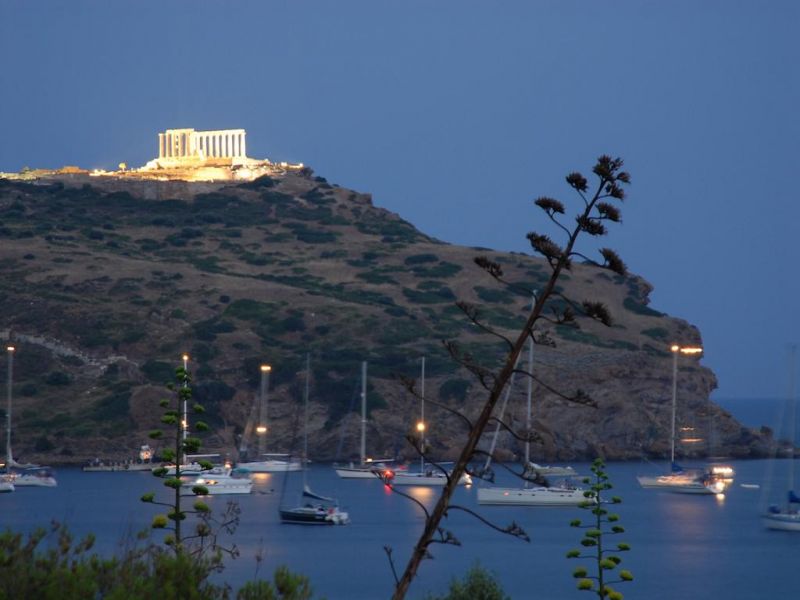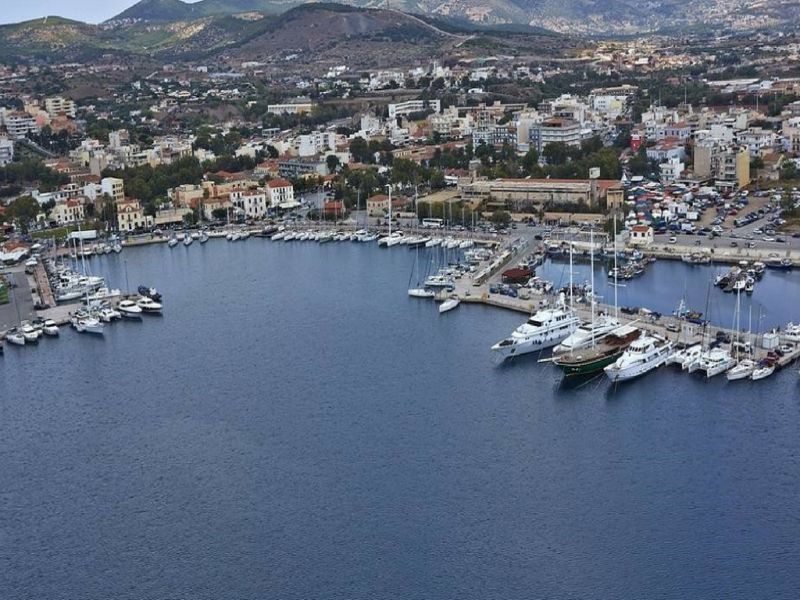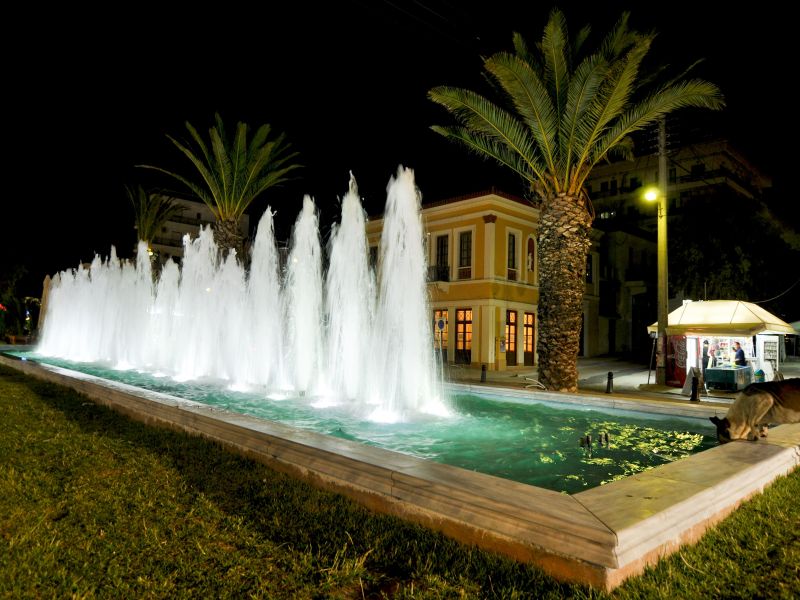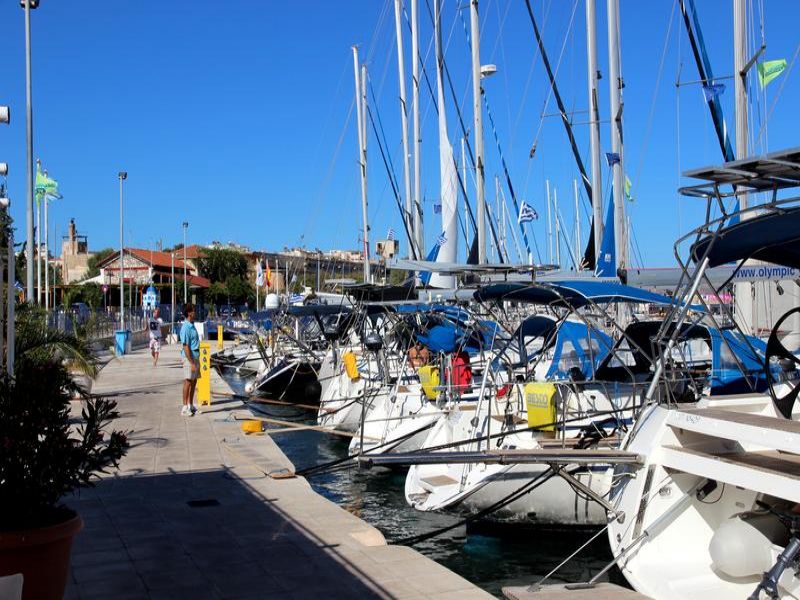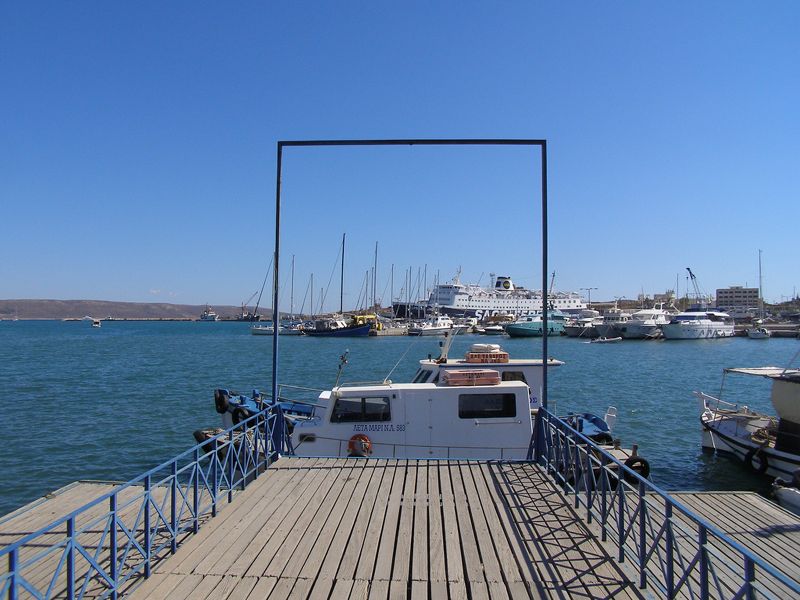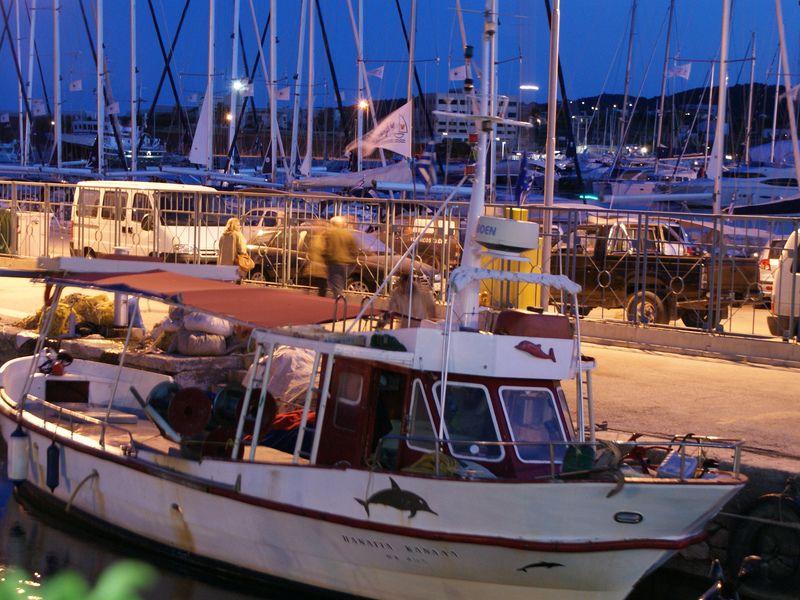6-day Sailing Itinerary from Lavrio
Lavrio is superbly located for explorers – easy to arrive at, but with boundless possibilities and directions to travel. Heading South into the Cyclades, you’ll find the hot thermal springs of Kithnos, the beautiful Mykonos, and the magnificent cathedral at Tinos – not to mention the mesmerising old villages of Paros, Naxos and Santorini if you have the time, inclination and energy to make the distance.
There's so much to explore from Lavrio, and the Cyclades are so vast, that unfortunately it isn't possible to see it all in one week, so we've developed this itinerary to give you plenty of sailing, a new port every night, hitting all the highlights, but also with enough time to relax, pop into nearby bays for a swim at will, have a leisurely breakfast or lunch, and enough time to get a feel for the places we visit.
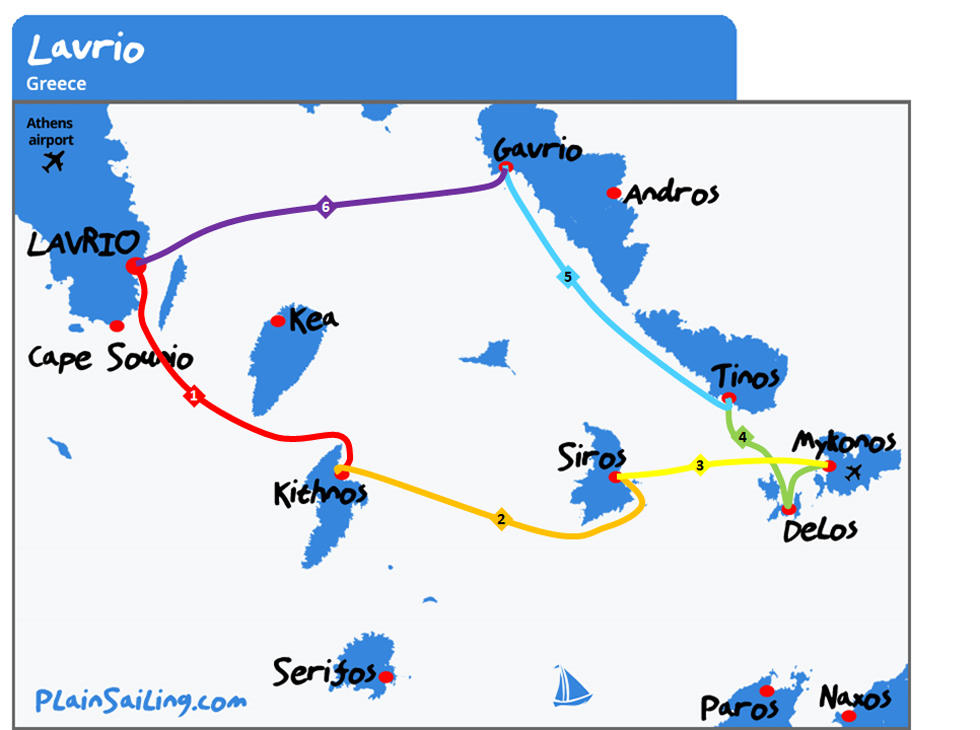 We've designed this itinerary on the assumption that after checking-in and sorting out your provisions on the Saturday, there won't be enough time to do a meaningful sail – which means this is a 6-day itinerary that also finishes in Lavrio next Friday night, when you'll have the boat inspected prior to checking out early on Saturday morning.
We've designed this itinerary on the assumption that after checking-in and sorting out your provisions on the Saturday, there won't be enough time to do a meaningful sail – which means this is a 6-day itinerary that also finishes in Lavrio next Friday night, when you'll have the boat inspected prior to checking out early on Saturday morning.
In total this itinerary is 157 nautical miles, with the longest day being 33 nM on the final day – at a pace of 5-6 knots, that means you should be able to complete most of the sailing at a reasonably leisurely pace.
Day 1. Lavrio to Loutra (Kithnos) – 30 nM 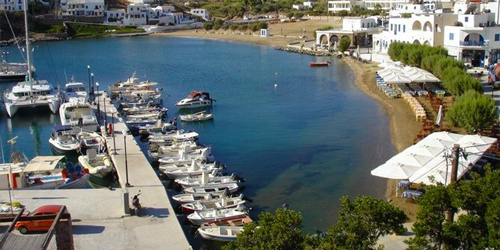
After briefing your crew, stowing everything below deck and pulling on a few of the ropes to remind yourself which ones are the important ones (they all are!), you’re all set to sail. Drop the lines, and coast gently out of the marina looking cool.
Once out of the marina, point your nose South-west, going with the prevailing wind to fill up your sails. Keeping in this direction, in five nautical miles, the Temple of Poseidon will be on a hill on the starboard side of the ship, and is well worth trying to spot from the sea. It’s been standing since before boats were invented!
After glimpsing that monument, change your course to South-East, and the island infront of you is our destination for the night. Loutra port is around the Eastern side of the island of Kithnos, so head East then South to follow the coastline home. Kithnos is famous for its thermal springs and healing waters – you can try them either at one of the thermal spas or in a free bathing area at the far end of Loutra beach. The water is toasty warm!
Day 2. Loutra to Ermoupoli (Siros) – 15 nM 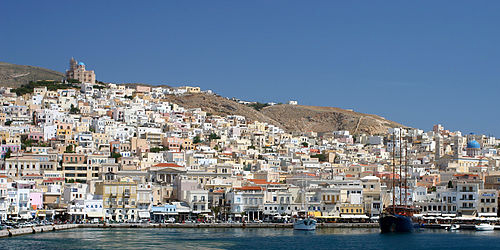
From Loutra, we’re heading to Ermoupoli on the isle of Siros, which is the capital city of the Cyclades region and has a range of grand architecture to match. You can tell straight away that this was originally part of the Venetian empire, with its neoclassically designed buildings, an opera house modelled on La Scala in Milan, and grand piazzas – and there is even a section of the town dubbed ‘Little Venice’ for the way the buildings are built into and around the sea.
To get there is fairly straight-forwards – Siros is pretty much due East of Kithnos, which means you should be able to reach across the prevailing Northerly winds to arrive without having to tack too much. Ermoupoli is on the Eastern side of the island, and is certainly a place to go and explore. It has a decent range of fine restaurants, and is a cosy and hospitable place to stay.
Day 3. Ermoupoli to Mykonos – 19 nM 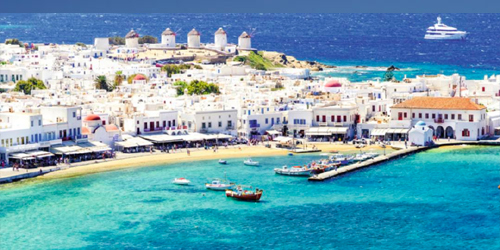
Sticking on an Easterly bearing, Mykonos – one of the wonders of modern day Greece – is just a short hop away. The arrival into Mykonos is truly memorable, and you can only imagine what it must’ve been like to arrive here if you’d been forced to row here all the way from Athens?!
After Athens and Corfu, Mykonos is the most well-known part of Greece, so it will be something of a triumph to be able to tell your friends that you sailed here yourself in your own private yacht (or catamaran). It's most famous for its beaches and the old town, but it's also got a lively nightlife and there are lots of people who are there to have fun. Thankfully things have calmed down a little since place was dubbed the 'Ibiza of Greece', but there are still a couple of bars that stay open well into the night.
Despite being extremely popular with tourists, Mykonos doesn't ever feel too crowded, and the narrow streets are a joy to stroll around at morning, noon or night.
Day 4. Mykonos to Tinos (Via Delos) – 14 nM 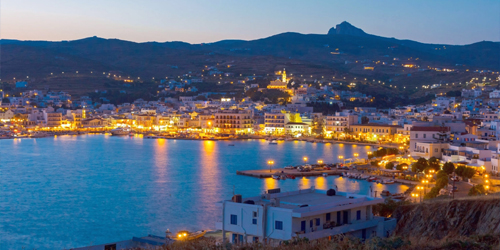
If you haven’t had much time to see Mykonos, there is still time to do it this morning – the planned voyage to the nearby island of Tinos is only short (you can see it in front of you as you look directly out of Mykonos marina) at 14 nM, and it’s shorter still if you go directly to Tinos instead of seeing what Delos has to offer – though we would recommend it.
Mythical Delos is a bit like stepping into a history book, and the island, in its entirety, is now a UNESCO world heritage site. It was classed as a sacred land after being the birthplace of the Greek gods Apollo and Artemis. The rules of the day meant that mere mortals were not even allowed to approach it. Later, whilst building the ancient temples that are still there today, there were rules about no mortal being born or dying there – so pregnant women and the aged were banished to Reinia island, nearby.
Delos is one of the birthplaces of Greek civilization, with temples dating back to over 600 BC, and a walk around the monuments genuinely feels like a step back in time. It’s not quite as glorious as in the past, but there’s so much still standing that it only takes a little imagination to wonder how magnificent and important a place Delos once was. If you only have time to see one landmark, the Temple of the Lions is the best.
From Delos, you’ll head into the prevailing winds, tacking and beating your way up to Tinos, a place with buildings that are just as impressive as in Delos, but in a completely different way. The cathedral at Tinos is a truly magnificent building, which was built using cash donated from right across Greece. It is the Greek equivalent of Lourdes or Fatima, and is at the site where the Holy Virgin Mary appeared to a Nun, telling her where she could find an icon with remarkable healing capabilities. The building is superb to look at, and so many pilgrims crawl from the port or marina up to the church that they lay down a carpet along the route during prime pilgrimage season.
August 15th is the biggest and busiest day of the year for Tinos, so if you’re here then, prepare for a wonderful celebration!
Day 5. Tinos to Gavrio (Andros) – 31 nM 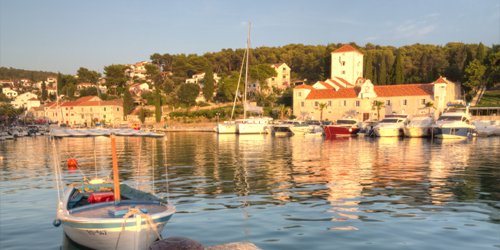
The sail from Tinos to Gavrio, on the island of Andros (the largest of the Cyclades islands) is a straight line in a north-westerly direction. Sailing wise, the prevailing wind should allow you to beat up the coast close-hauled for the day, so it should also appear as a straight line on your plotter (if it doesn’t, have a word with your helm!)
Andros is a relatively undeveloped island - as you should notice as you sail alongside her – and Gavrio is a quiet and picturesque fishing village, which is pretty much your picture postcard Greek island sailing marina. It’s a very relaxing place to spend the night, there are some nice beaches nearby, and the people here will look after you well.
August 15th is the biggest and busiest day of the year for Tinos, so if you’re here then, prepare for a wonderful celebration!
Day 6. Gavrio to Lavrio – 33 nM 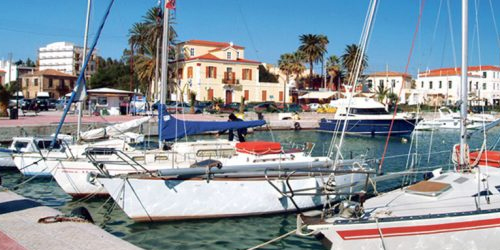
The final leg of our itinerary, from Gavrio back to Lavrio, is also the longest, but at 33 nM it should not feel too long. We’re heading due West with a reach or a broad reach against the prevailing northerly winds, which should mean the crossing is not too complicated.
Once you’re back in Lavrio, the boat will need to be returned where you got it from, and you’ll need to pay for it to be refuelled (this is usually via a mobile mini-tanker which will come to you, rather than via a fuelling berth, but check with your charter company, as some do it differently).
Lavrio has a few bars and decent restaurants to help you to ease yourself back into a life on-land, and there will be plenty of other sailors out and about in town as the boats come in and the crews change over for another week.
Hopefully, you will’ve had an exhilarating yet blissful week, and enjoyed seeing so many different aspects of the islands. There’s still so many islands in Greece left to explore, so when you’re ready, in a few weeks’ time, you should check out PlainSailing.com and find out where to charter next year!
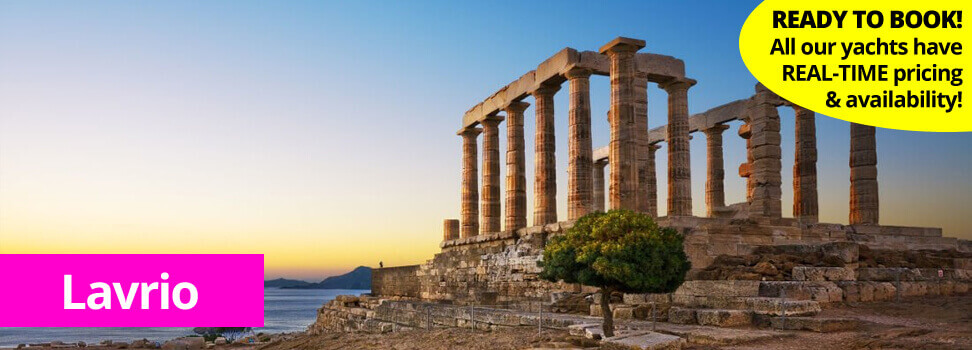
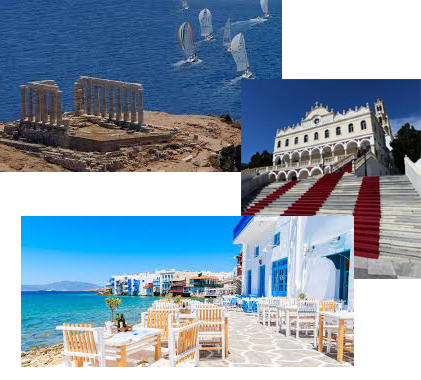
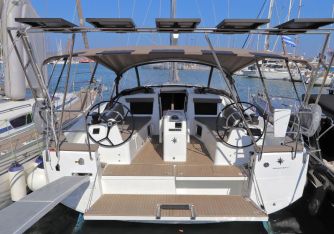
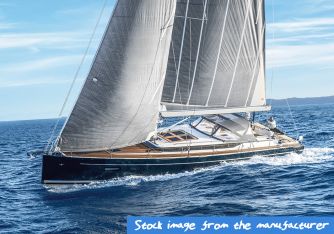







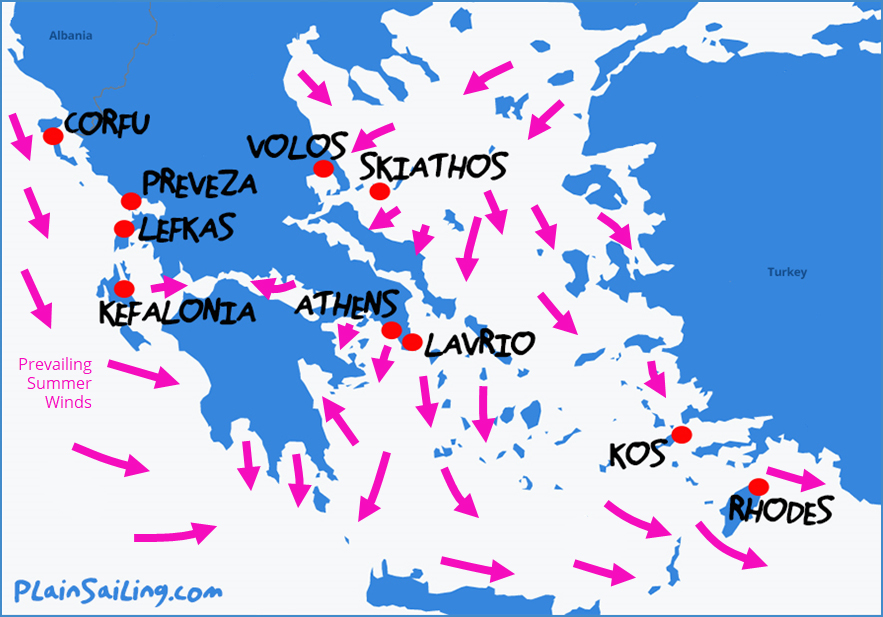
 Lavrio is blessed with fine weather pretty much all year round, and the temperatures seldom drop below ten degrees, even at the height of winter – which means that you should almost be able to sail in shorts and t-shirt all year round! Of course, the temperatures rise as the sailing seasons hots up, with very pleasant weather from around May, when the mercury reaches 20 degrees or above, though in high season the temperatures can reach upto the high thirties - it’s good to be out at sea, when the wind can help to make you feel cooler!
Lavrio is blessed with fine weather pretty much all year round, and the temperatures seldom drop below ten degrees, even at the height of winter – which means that you should almost be able to sail in shorts and t-shirt all year round! Of course, the temperatures rise as the sailing seasons hots up, with very pleasant weather from around May, when the mercury reaches 20 degrees or above, though in high season the temperatures can reach upto the high thirties - it’s good to be out at sea, when the wind can help to make you feel cooler!
